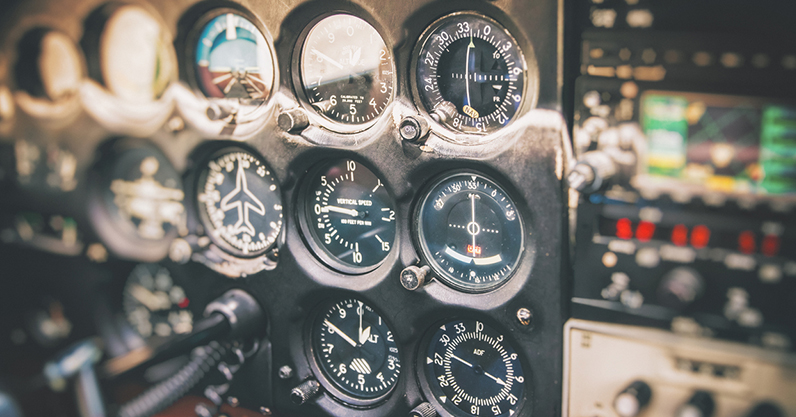By Steven Daun, National Chief Pilot
We see many students come through our doors each year to earn their private pilot certificates. The majority of these students continue on to earn their instrument rating. However, when we speak with people who received their private pilot certificates years ago or from other schools, the story is quite different. Many of those pilots either have a difficult time earning their instrument rating or decide against going for it altogether.
There are several reasons why pilots may find an instrument rating too difficult to obtain and choose to not pursue one. Our hope in this article is to identify those reasons so that they can be addressed and hopefully encourage more private pilots to pursue their instrument ratings.
Reason 1: Poor primary training during the private pilot course.
One of the primary skills that we focus on during the private pilot course is basic attitude flying. That is, flying the airplane with reference to outside visual cues along with pre-determined power settings. In simple terms “attitude + power = performance.” There is no need for any of the aircraft instruments during this phase. All that a pilot needs to understand is that at a certain pitch attitude with a certain power setting, the aircraft will do exactly what is anticipated. Once this set of skills is solidified, we focus on perfecting the climbs, turns, and descents skills. Both can make up 5 – 10 hours of the initial primary training and shouldn’t be rushed. The reason these are so important is that your instrument rating course will begin with the same exact skills. The only difference now will be that rather than looking outside, we take those same visual cues and apply them to the attitude indicator and other instruments.
As you can see, if pilots have not perfected these skills during their private pilot course, they may experience some challenges during the instrument rating course. We can usually identify these issues early in the course and, if done correctly, we can strengthen these basic attitude skills before frustration and difficulty set in.
Reason 2: Lack of aircraft systems understanding.
If you aren’t sure how something works, how can you be sure of what it is telling you? A large part of your instrument training is learning what to do when something doesn’t work properly. Without a strong understanding of systems, we see frustration and pressure build. To counter this, we review all the aircraft systems early in the training. From the electrical system to the engine and avionics. We have found over the last 80 years that reviewing each of these systems in the simulator greatly enhances the educational experience and speeds up the understanding. Going through “what if” scenarios reduces stress when you get into the airplane because you already know what to do if something doesn’t make sense.
Reason 3: Lack of basic meteorology knowledge.
Understanding weather trends, basic forecasting, how to read weather charts, and understanding how the local and forecasted weather will affect your flight reduces fear, fatigue, and stress. By learning and understanding the weather, you will find that your decision-making process is easier and you can anticipate what you will do and experience in each segment of your approach. We find that most pilots receive only a cursory level of explanation of weather during their private pilot training. By understanding this, we can integrate this into an Instrument course from day one. Our students find that by constantly reviewing and discussing the weather before and during each flight, they can effectively correlate what they have heard during their weather briefing with what they are experiencing during the flight.
Earning your instrument rating first and foremost makes you a better and safer pilot. You will see and feel this by your third lesson. Your confidence will begin to increase as will your situational awareness. The truth of the matter is that a small portion of IFR flights is in the clouds. However, it’s nice to know that if you do find yourself in or above the clouds you have many more options available to you with an instrument rating than without one.
The most exciting and intriguing part of instrument flying is that you can take off from a 25’ wide by 2,000’ long runway, enter the clouds and fly for several hours and hundreds of miles without seeing anything down below. After shooting the approach, you break out of the clouds a few hundred feet above another runway that is 25’ wide by 2,000’ long. The best part is that you did it on your own, you did it safely and you are now part of a very small exclusive club of pilots who can do the same. What are you waiting for?
American Flyers has trained more instrument pilots in the last 80 years than any other school. With the right program, right instructors, and the right equipment, you will and should enjoy your instrument training experience. If you still aren’t convinced you can always try a mini instrument transition course. We call it the “CIP” course. This course takes you through the basic fundamentals of instrument flying on the ground, in the sim, then finally in the airplane.










